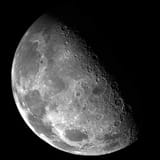Moon Monday #226: Blue Origin aims to launch its first two Moon missions by next year—with nearly no NASA payloads
Plus: Firefly to carry UAE’s second lunar rover and more.
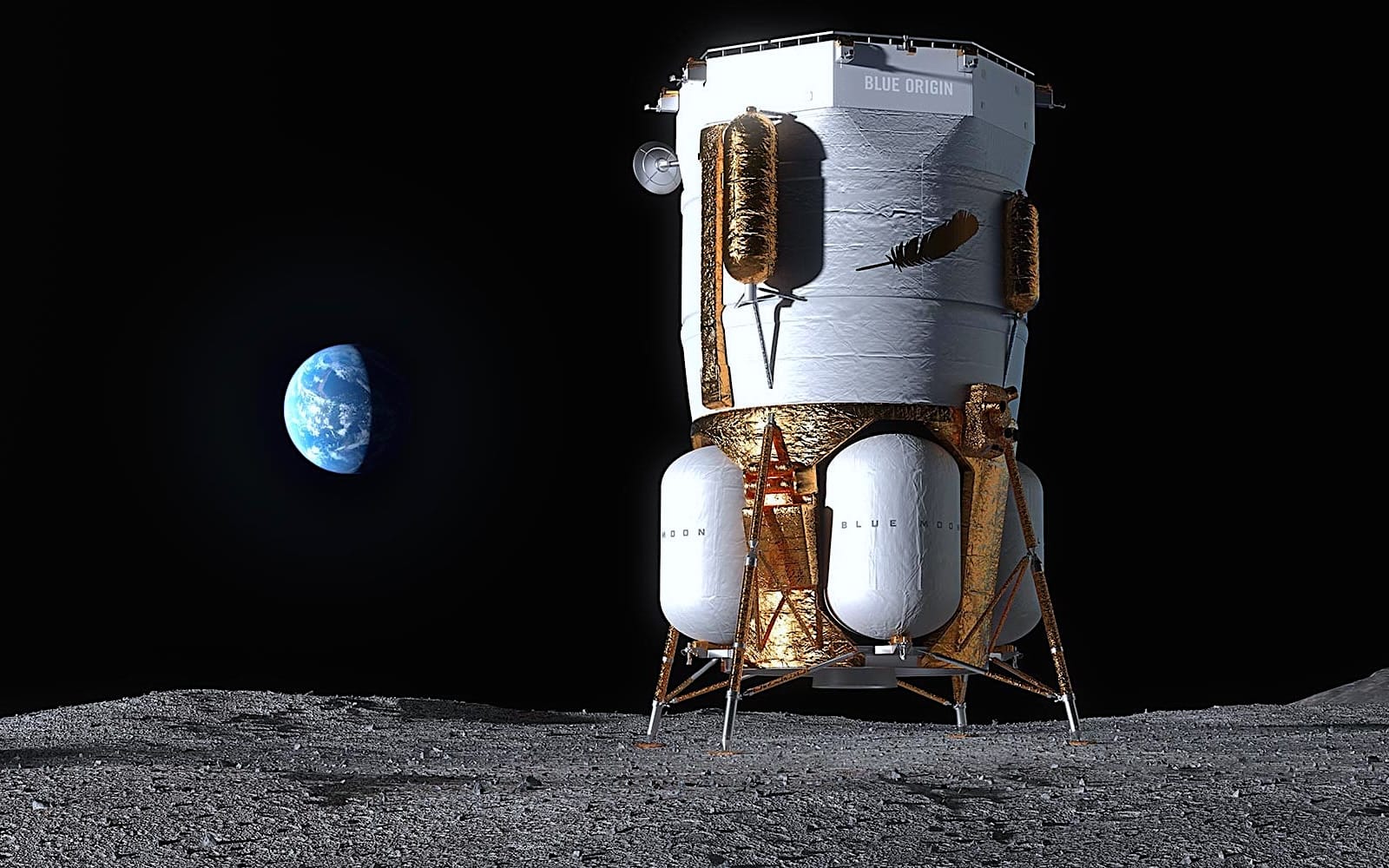
Jeff Foust reports that Blue Origin indeed aims to launch its robotic Blue Moon Mark I lander later this year on a New Glenn rocket. The trip to the Moon will take seven days, and the landing site will be somewhere on the Moon’s south pole. The region is known to have water ice deposits based on orbital remote sensing measurements but it’s unclear what payloads the Mark I will carry on this flight, and if any are related to lunar water.
Blue Origin will launch another Mark I lander next year, incorporating lessons based on how the first “Pathfinder” flight performs. It also gives the company another shot at landing on the Moon in the near future should the first Mark I fail.
One payload the Pathfinder Mark I will certainly carry is NASA’s third version of the multi-camera SCALPSS payload. The second SCALPPS, which flew on Firefly’s first Moon lander called Blue Ghost earlier this year, snapped close-up images of the Moon’s surface as the lander’s thruster plumes vigorously kicked up lunar dust, soil, and rocks—collectively called regolith. Collectively, these measurements will help lunar scientists and engineers better understand how rocket plumes blast out lunar regolith and affect the local lunar environment, and thus how to best protect future astronauts, critical hardware, and long-term habitats on the Moon.
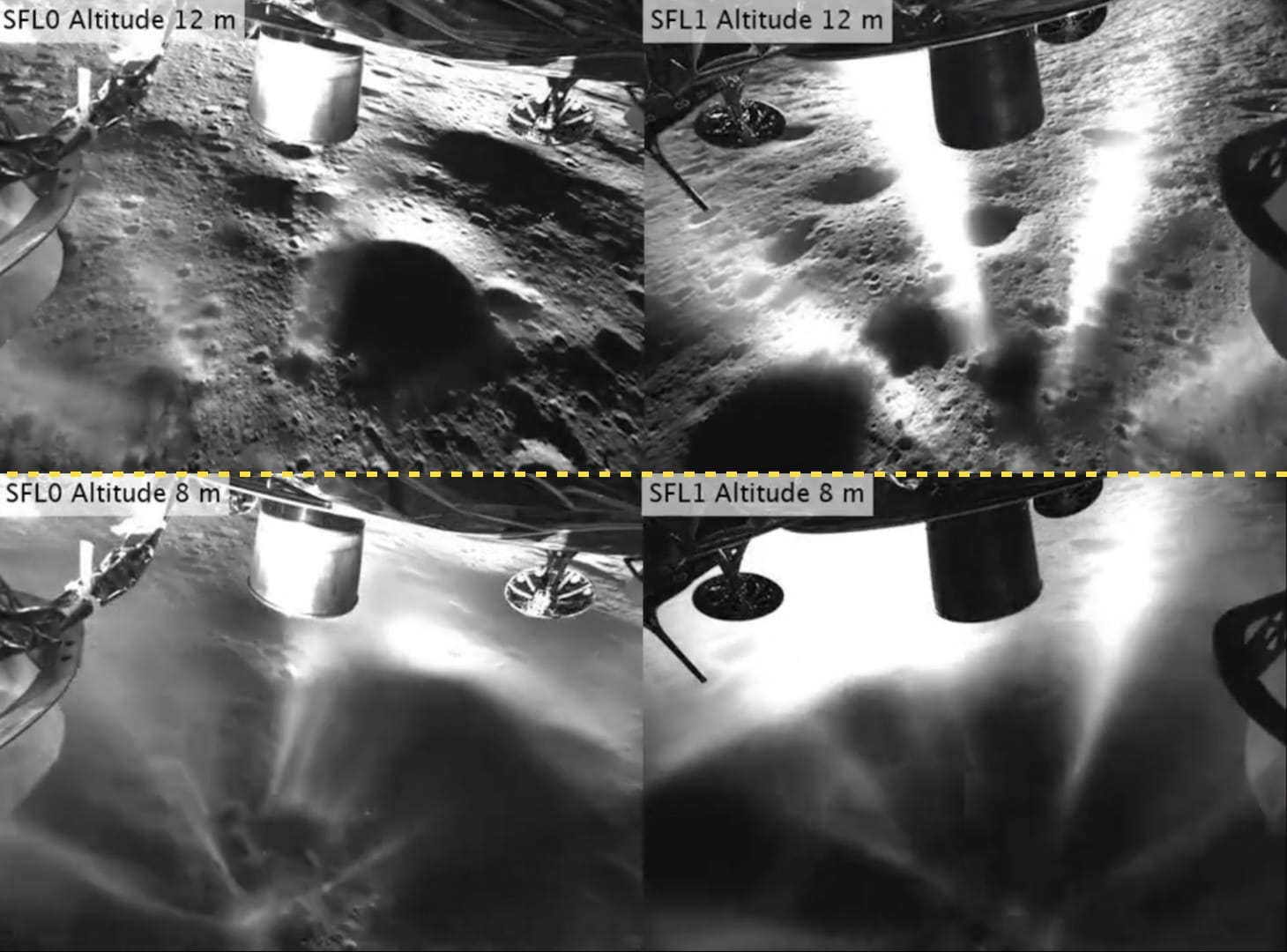
NASA is re-flying SCALPPS on a Mark I because unlike smaller landers like Blue Ghost, Mark I will generate high enough trust to allow NASA to gauge engine plume effects at the scale of large crewed (Artemis) landers. That is what allowed NASA to award the payload flight to Blue Origin last year under a $6.1 million CLPS contract without holding a competition. Although NASA did not publicly announce the contract itself at the time.
The only other payload onboard seems to be a small retroreflector for lunar satellite ranging and navigation studies. Note that the Mark I lander has a large payload capacity of 3,000 kilograms. That’s more than the entire fueled mass of smaller landers like Firefly’s Blue Ghost and India’s Chandrayaan 3! And yet NASA hasn’t stated any plans to fly any other scientific instruments on either of the two Mark I flights. Considering that the US has been failing to explore lunar water as the principal goal of Artemis, and that the Mark I’s landing site is the lunar south pole, it would be remiss for NASA to skip flying any lunar water related payloads on the Mark Is as a bare minimum. Whether that be through Artemis, CLPS, or other funding sources does not ultimately matter.
For Blue Origin though, the Mark I is a key technology demonstrator for crewed missions in more ways than flying related NASA instruments. With the two self-funded robotic Mark 1 flights, Blue Origin wants to test and refine critical landing and associated systems before graduating them to the Mark 2 lander, which aims to land astronauts on the Moon for NASA with Artemis V by end of decade. Competitor SpaceX is targeting landing lunar astronauts for NASA with earlier Artemis III and Artemis IV missions through a Lunar Starship. Note that NASA requires crewed landers from both Blue Origin and SpaceX to touchdown within 100 meters of their targeted spots on the Moon’s rocky south pole. This is something the robotic Mark 1 will attempt as a precursor to the crewed Blue Moon. The ability is also precisely what JAXA’s robotic SLIM lander achieved last year.
Relatedly for Artemis V, Blue Origin has revealed that the mission’s “Transporter” vehicle will launch on a single New Glenn rocket. It will be fueled with leftover propellant from multiple New Glenn second stages though. Once fully fueled, it can carry the liquid hydrogen and liquid oxygen to lunar orbit to enable the crewed Blue Moon to touchdown on Luna and return to lunar orbit.
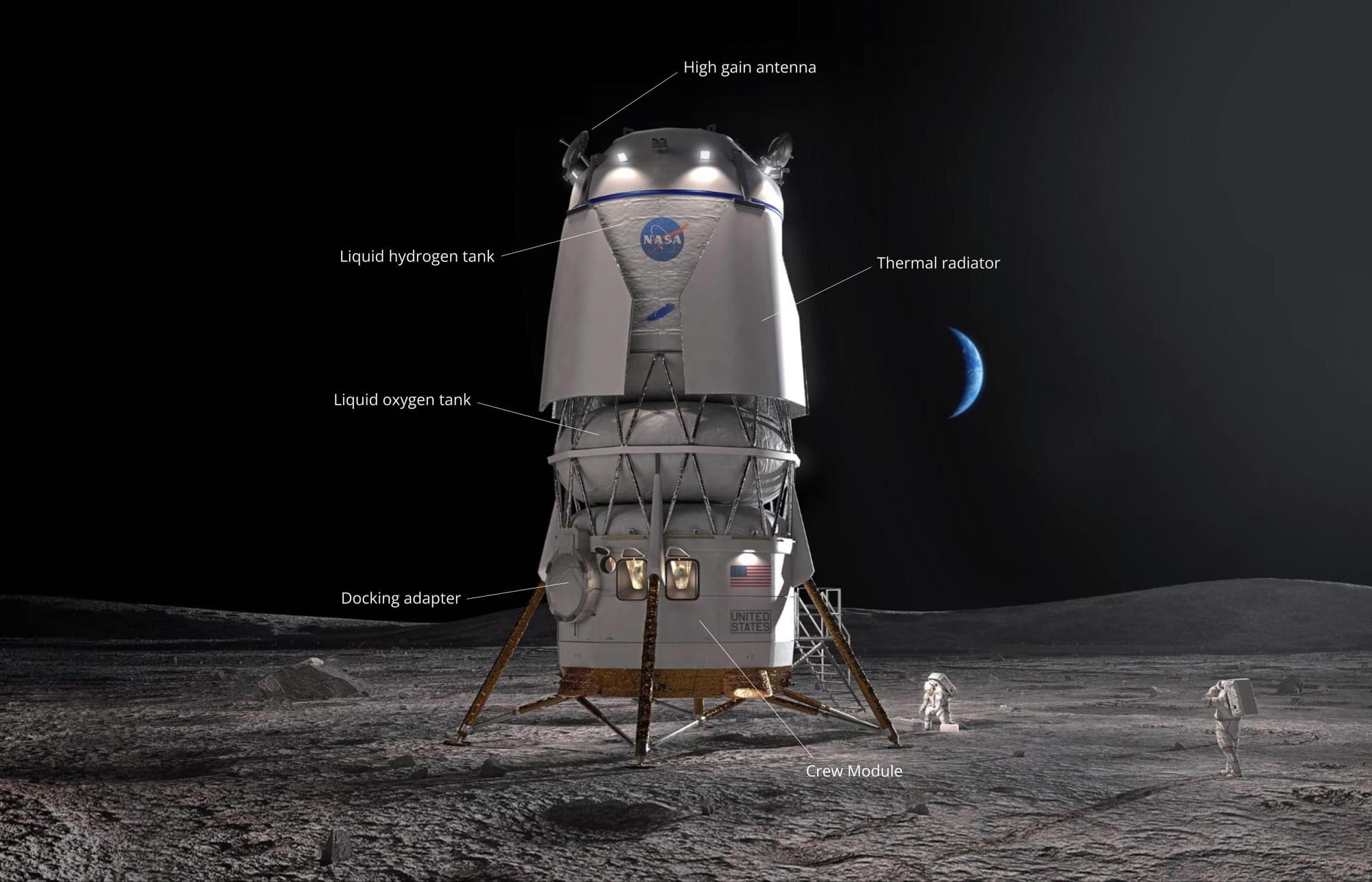
Many thanks to The Orbital Index and Kris Zacny for sponsoring this week’s Moon Monday! If you too appreciate my efforts to bring you this curated community resource for free and without ads, support my independent writing. 🌙
Firefly to carry second UAE lunar rover and more
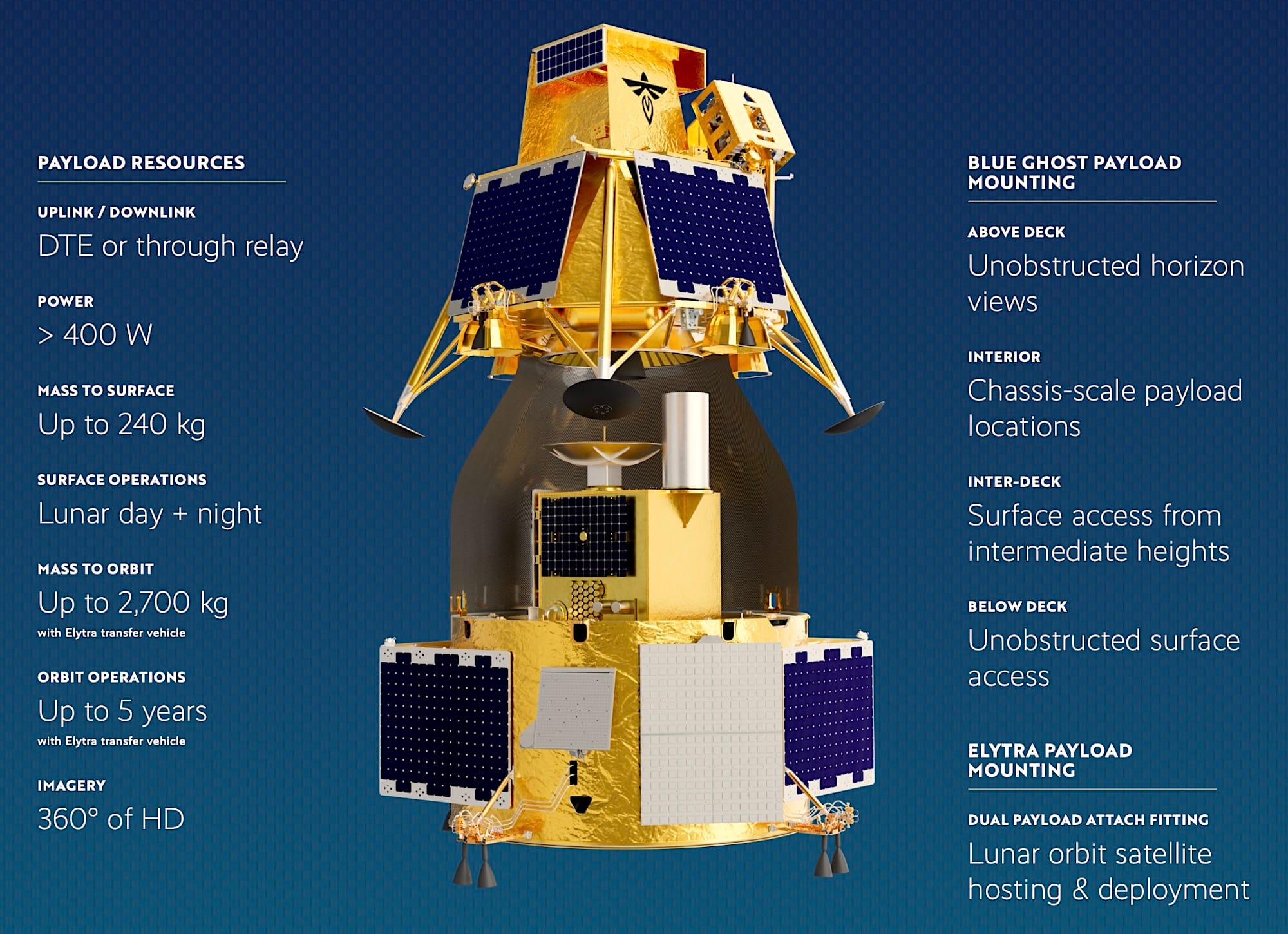
Last week I wrote that UAE would not specify which Moon lander would carry the country’s second Rashid rover next year. Later in the week, Firefly and the UAE space agency MBRSC announced that the former’s second Blue Ghost lander part of NASA’s CLPS program will do so. UAE’s near-identical Rashid rover 1 launched in 2023 but it couldn’t operate on the Moon since ispace Japan’s first Moon lander carrying the rover crashed. The Rashid 2 rover will have largely the same science & technology goals. For Firefly and NASA, Blue Ghost 2 carrying the Rashid rover to the Moon would be a milestone in flying actual commercial payloads instead of those funded by the US government or its longtime allies.
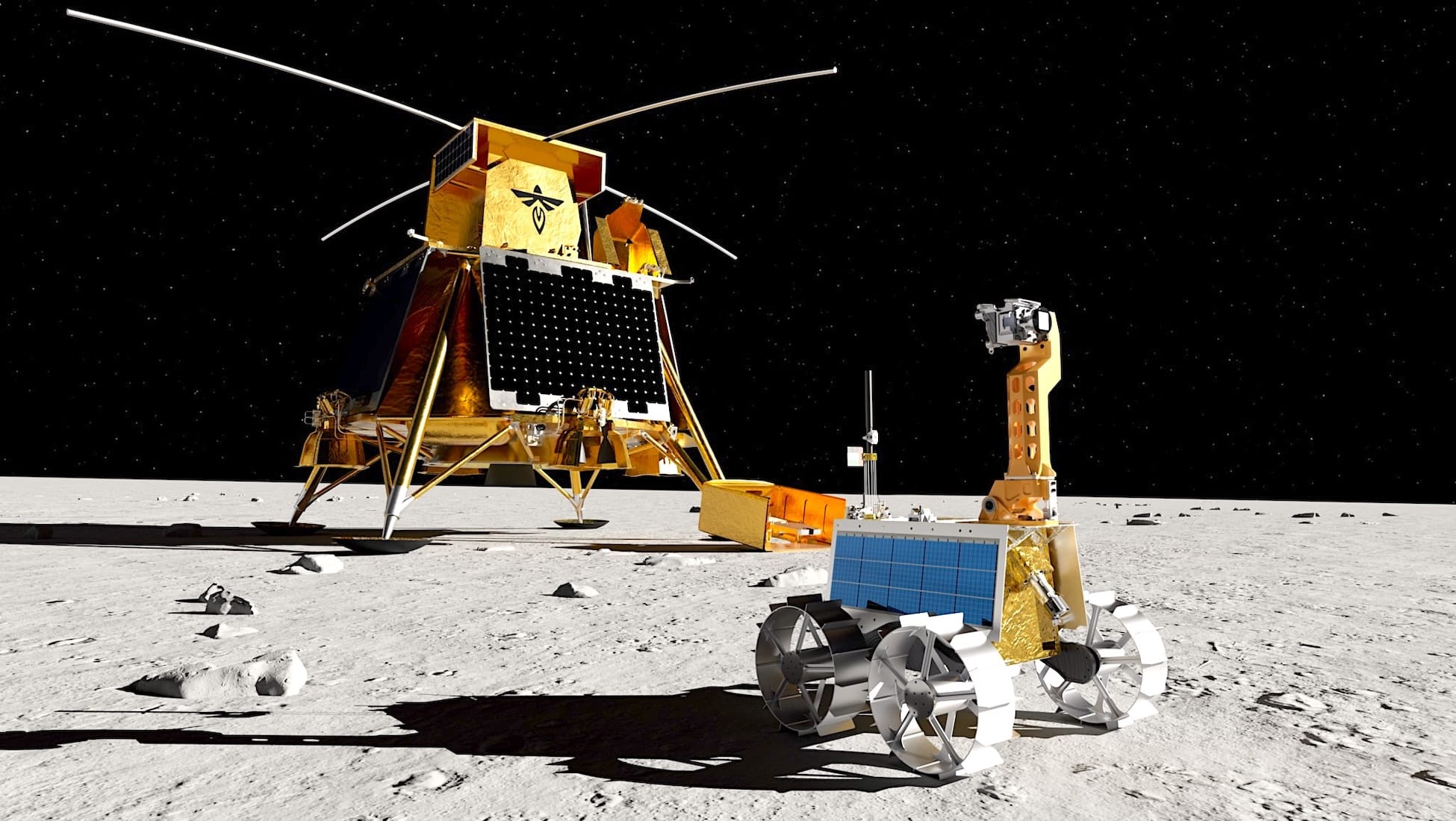
With Blue Ghost 2, Firefly aims to deliver an orbiter and surface payloads to the Moon in 2026. The company will leverage a similar lander design as its successful first CLPS Moon mission but will add an orbital transfer stage called Elytra Dark. The latter will help deliver the 280-kilogram Lunar Pathfinder spacecraft for ESA in lunar orbit. Pathfinder is a stepping stone towards Moonlight, ESA’s upcoming navigation and communications constellation in support of lunar surface missions.
The Blue Ghost lander itself will attempt a touchdown on the Moon’s farside. Once on the surface, it will deploy the NASA-funded LuSEE-Night instrument. It’s a first of its kind, aiming to measure faint but unique radio signals from our Universe’s ‘Dark Age’—a slice of time right before the first stars were born. LuSEE-Night will help us characterize the Moon’s radio emissions for future farside radio telescopes. Firefly has also won an extended $18 million contract from NASA for Elytra Dark to provide communications and radio frequency calibration services for LuSEE-Night.
Blue Ghost 2 will also carry a commercial seismometer from Australia-based Fleet Space Technologies. Once deployed, it will operate by tapping into lander-provided power and communications services—much the same as how the seismometer deployed by India’s Chandrayaan 3 lander operated. Part of the larger global effort to study Moonquakes, SPIDER will offer scientists insights into the physical structure and nature of the local crust and subsurface. It might also provide hints of resources such as water ice, depending on the chosen landing site which is as yet unannounced.
More mission updates
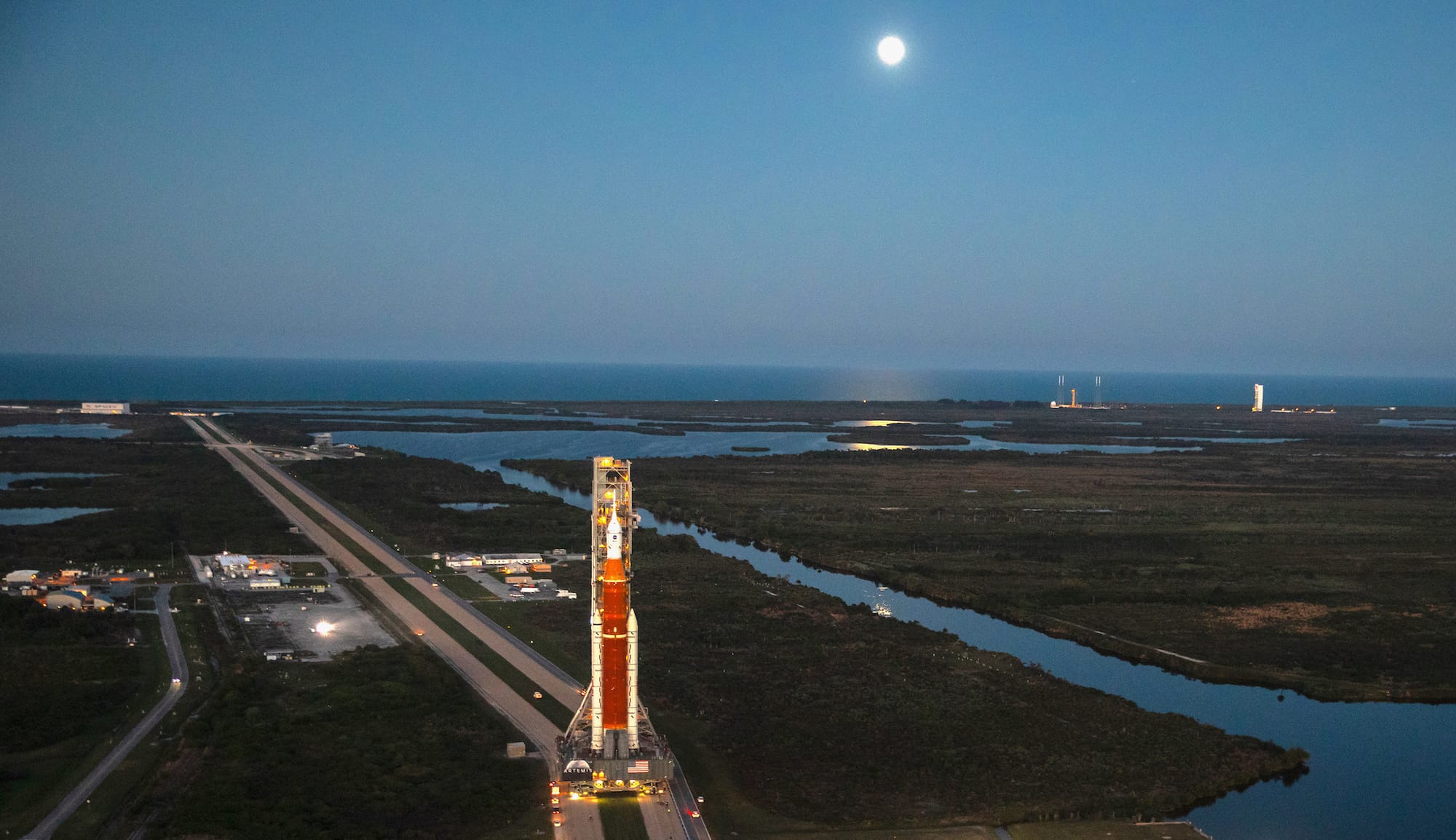
- The SLS rocket for NASA’s upcoming crewed Artemis II circumlunar mission will also deploy four CubeSats from other countries in high Earth orbit: one each from Germany, South Korea, Argentina, and Saudi Arabia. These will largely perform radiation measurements and some technology demonstrations.
- After announcing earlier this month that ispace Japan has taken $35 million more in loan financing, the company has announced an additional $70 million loan from Sumitomo Mitsui Trust Bank to continue developing its next set of Moon missions. This includes ispace’s US subsidiary’s first CLPS mission for NASA through Draper, which is targeting landing on the Moon’s farside in 2027. The loans also include funding for the next mission, to be conducted by ispace Japan. The development continues to highlight the intersection of CLPS, funding, and science.
- Interestingly, ispace also announced indirectly that said first CLPS mission by ispace US through Draper will also carry a rover from ispace Europe.
More Moon
- Astrobotic says it has completed the standard but critical set of space environmental tests for their upcoming commercial wireless charging system for hardware operating on the Moon. The offering aims to enable lunar night survival for polar rovers and other such mobile exploratory hardware, ideally by end of decade.
- The Planetary Society has launched an online petition to oppose the proposed 47% budget cut for NASA space science and exploration in the coming year. The society will deliver the signed petition to members of the US Congress next month just as they start assessing the proposed cuts to appropriate, revoke or reinstate specific funds for NASA and its programs. Note that NASA’s FY2026 presidential budget request does not allocate any funds or missions to directly find and study water ice deposits on the Moon even though the US has been failing at this central goal of Artemis. Ensuring continued space science funding for NASA would prevent the already bad situation for Artemis science from getting worse. The petition can be signed by non-US citizens too, and so I’ve done the same. Maybe you can too.
